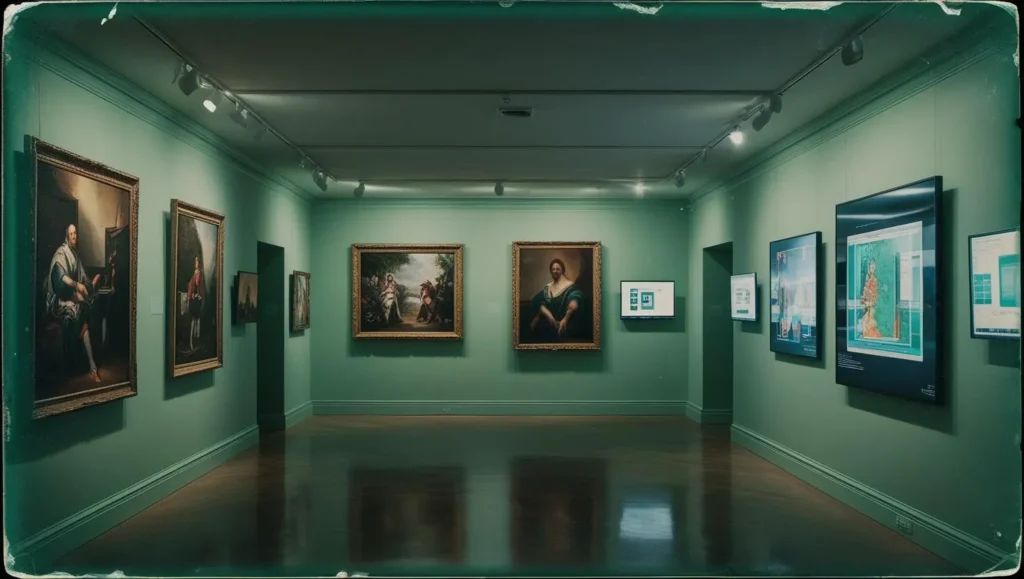Digital colonialism reshapes the concepts of art, culture, and power in intertwined and multifaceted ways. Below is an analysis of how these notions are impacted.
Art
Transformation of Production and Distribution
Digital colonialism alters how art is created, shared, and consumed. Digital art, reliant on technology and software, becomes a tool for disseminating dominant cultural values and practices. Major digital platforms, controlled by large corporations, often prioritize certain types of art and artists, marginalizing others.
Cultural Appropriation and Distortion
Digital colonialism facilitates cultural appropriation, where elements of marginalized cultures are used without respect or understanding of their original context. This results in the distortion and erasure of indigenous and non-Western artistic expressions. When digital art is showcased on global platforms, it risks losing its authenticity and original meaning through decontextualization.
Commodification and Surveillance
Under digital colonialism, digital art becomes a commodity, with user attention and data transformed into economic value. Digital capitalism imposes market-driven logic on artistic creation, affecting the creativity and autonomy of artists.
Challenges to Authenticity and Ownership
Artists from regions like Southeast Asia use colonial digital archives to challenge notions of originality, authenticity, ownership, and control. Digital art enables these archives to be reused and recontextualized, offering new voices and perspectives to narratives previously dominated by colonizers.
Culture
Cultural Hegemony
Digital colonialism perpetuates the cultural hegemony of the Global North, where Western values are prioritized over others. Digital platforms, often designed with a specific cultural foundation, propagate norms that marginalize or suppress non-dominant cultural expressions.
Crisis of Cultural Values
Excessive digitalization can lead to a crisis in cultural values, as digital representations often fail to capture the authenticity of the physical world, leading to distortions and the erasure of diverse cultural expressions. This affects how non-Western cultures are valued and represented both online and offline.
Digitalization as a Tool of Imperialism
Digitalization and connectivity are promoted as new forms of social advancement, but from a colonial perspective, they also act as tools of imperialism, imposing cultural practices and values that foster technological and cultural dependency. Technology, in this sense, is not neutral but serves as a vehicle for continuing unequal power relations.
Culture as Software
Viewing culture, media, and cultural works as software shifts the focus to the operations available to users. This perspective highlights that culture is not a static body of knowledge but a set of practices and operations influenced by technology.
Reconfiguring Historical Narratives
Through digital art, artists and scholars challenge colonial narratives by digitally manipulating historical archives to reimagine and reclaim their stories. This contributes to greater democratization and inclusion in postcolonial archives, offering alternatives to dominant representations.
Power
Technological Control
Digital colonialism manifests through technological control, where corporations and governments from the Global North dominate software, hardware, and network infrastructure. This concentration of power marginalizes local artists and limits access to global platforms.
Data Extraction and Management
Power is exercised through data extraction and management, transforming user information into economic value. The control of attention on digital platforms establishes a new form of power, enabling companies to predict and influence human behavior.
Asymmetrical Power Relations
Power relations in digital colonialism are asymmetrical, benefiting Global North countries through data exploitation and technological control, while peripheral nations face challenges in infrastructure development and the protection of their culture and privacy.
Reinforcement of Existing Structures
Historic colonial power structures are replicated in the digital space, with persistent hierarchies and inequalities. While digital technology is often seen as a democratizing force, it can reinforce existing power dynamics if not used critically and consciously.
Decentralization of Power
“Digital disruption” seeks to decentralize power by promoting collaboration among peripheral nations to develop digital art practices rooted in local contexts. This approach aims to resist the technological and cultural hegemony of the Global North and create alternative spaces for artistic expression.
Conclusion
Digital colonialism redefines art by turning it into a commodified product, culture by prioritizing Western values, and power by concentrating it in the hands of large corporations and governments in the Global North. However, recognizing the power dynamics and using technology critically and consciously can pave the way for more inclusive and equitable digital spaces.
Victor T. Murari
Art History, Education & Artificial Intelligence | PhD | Advancing Educational and Cultural Narratives through AI Integration

